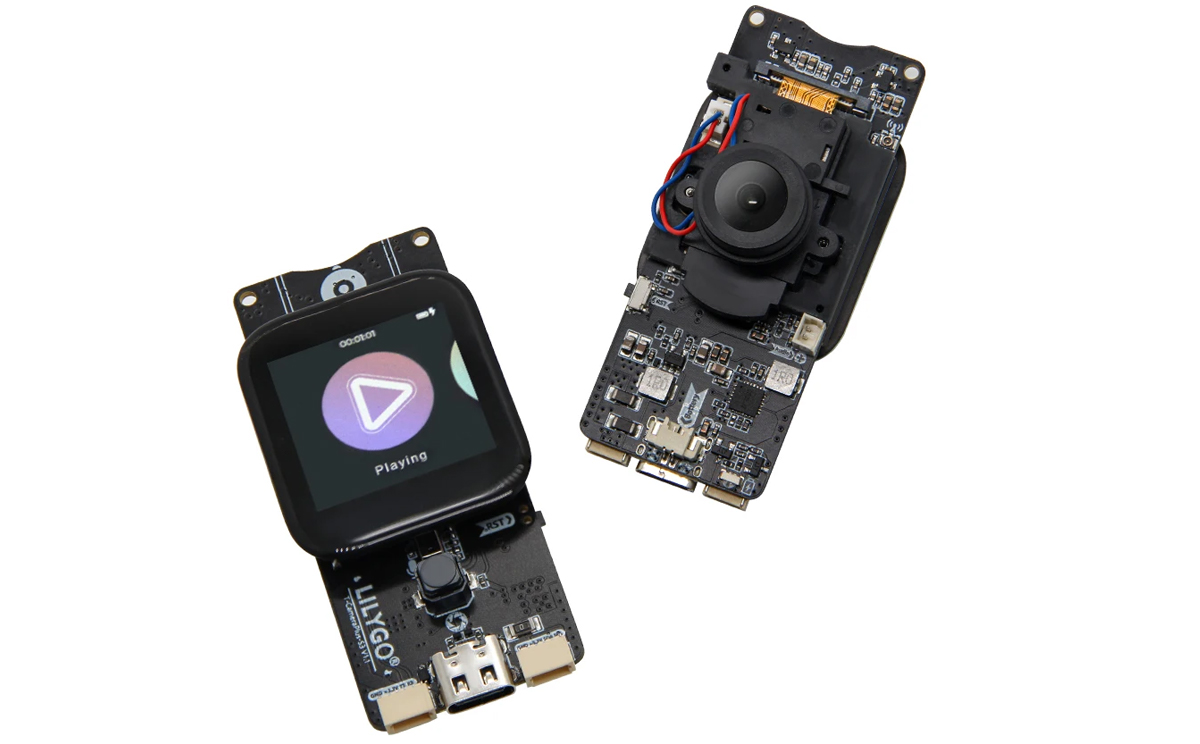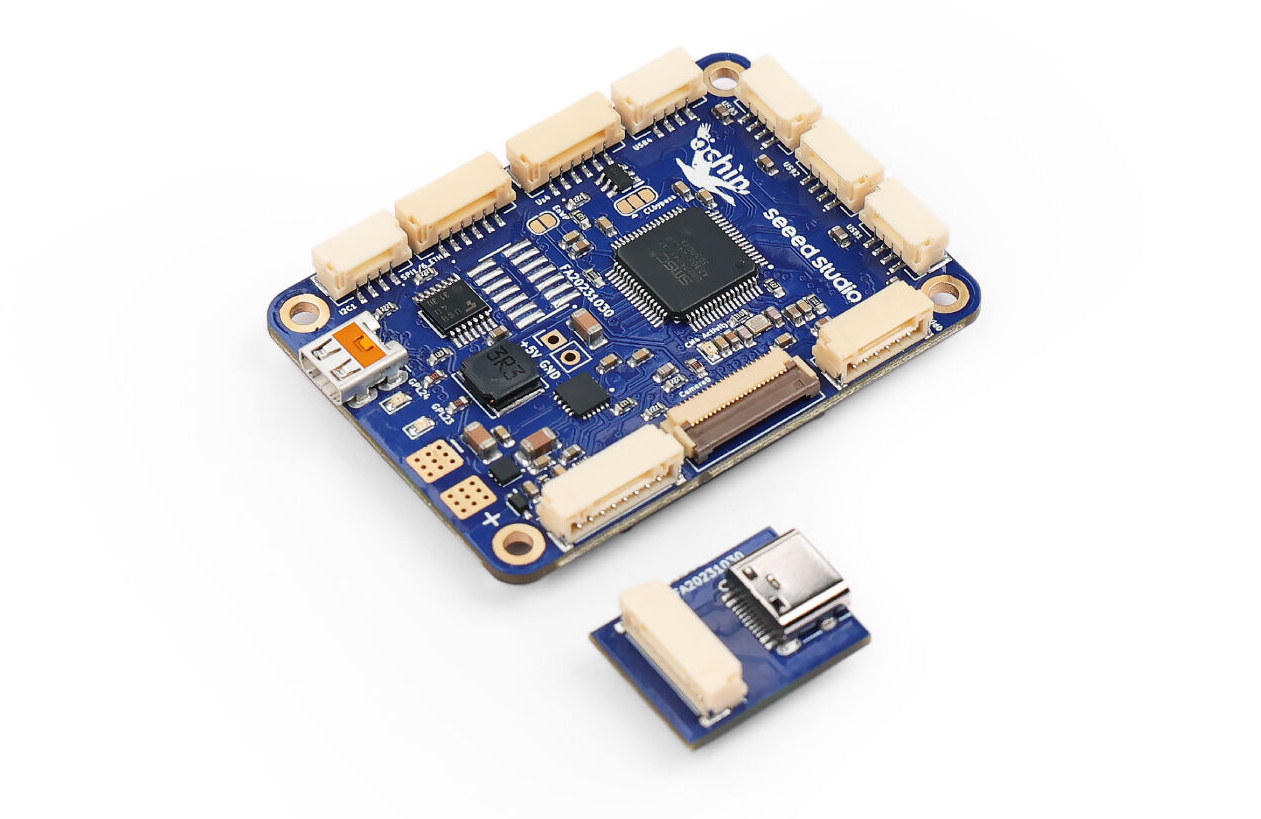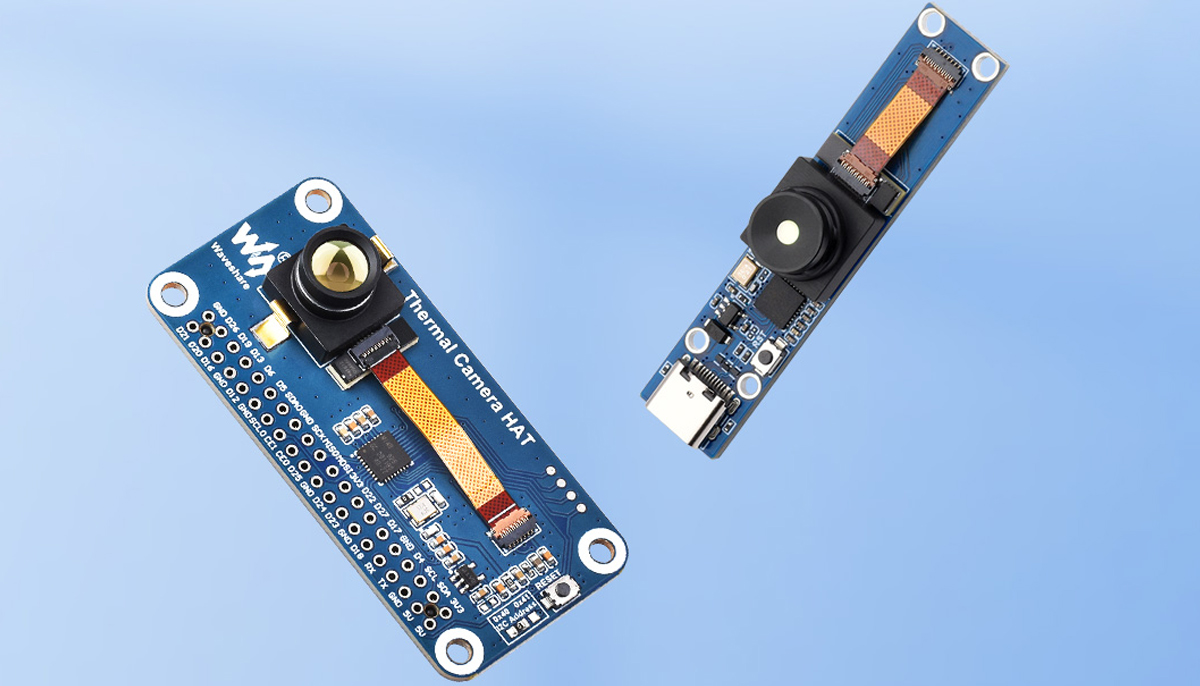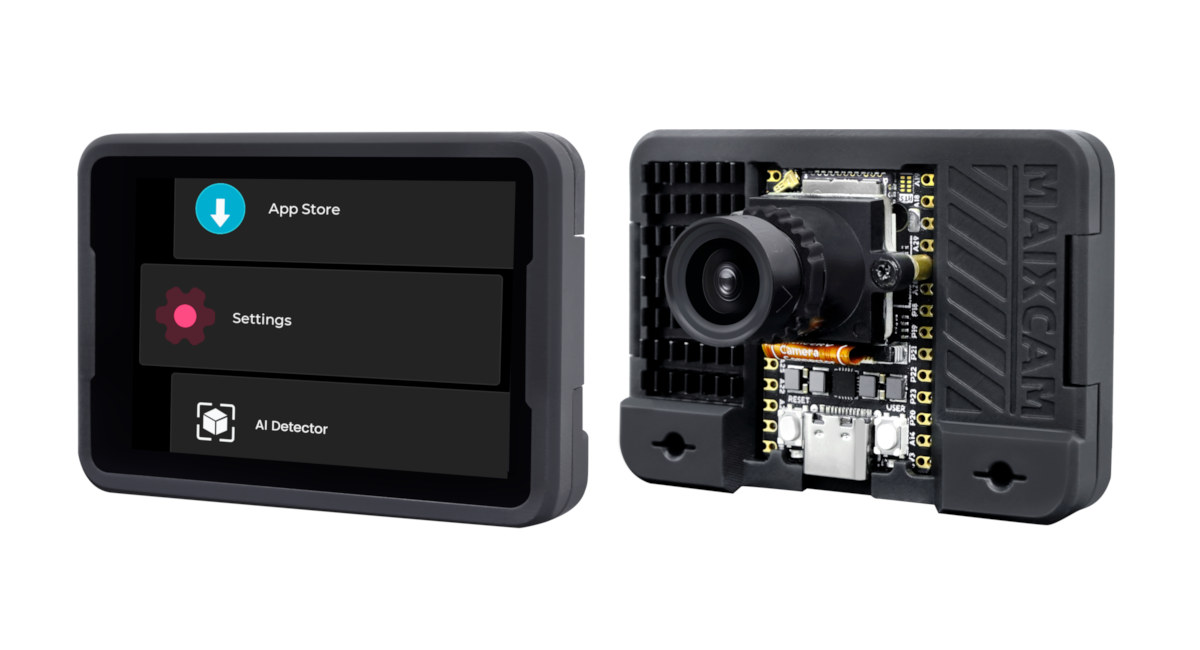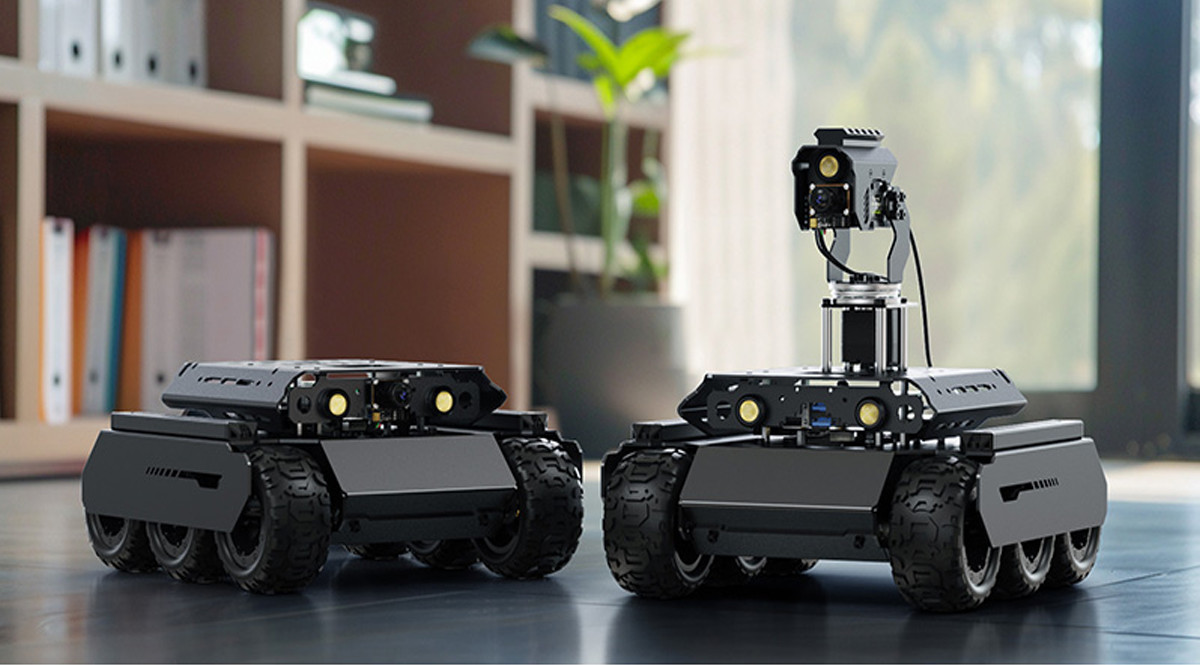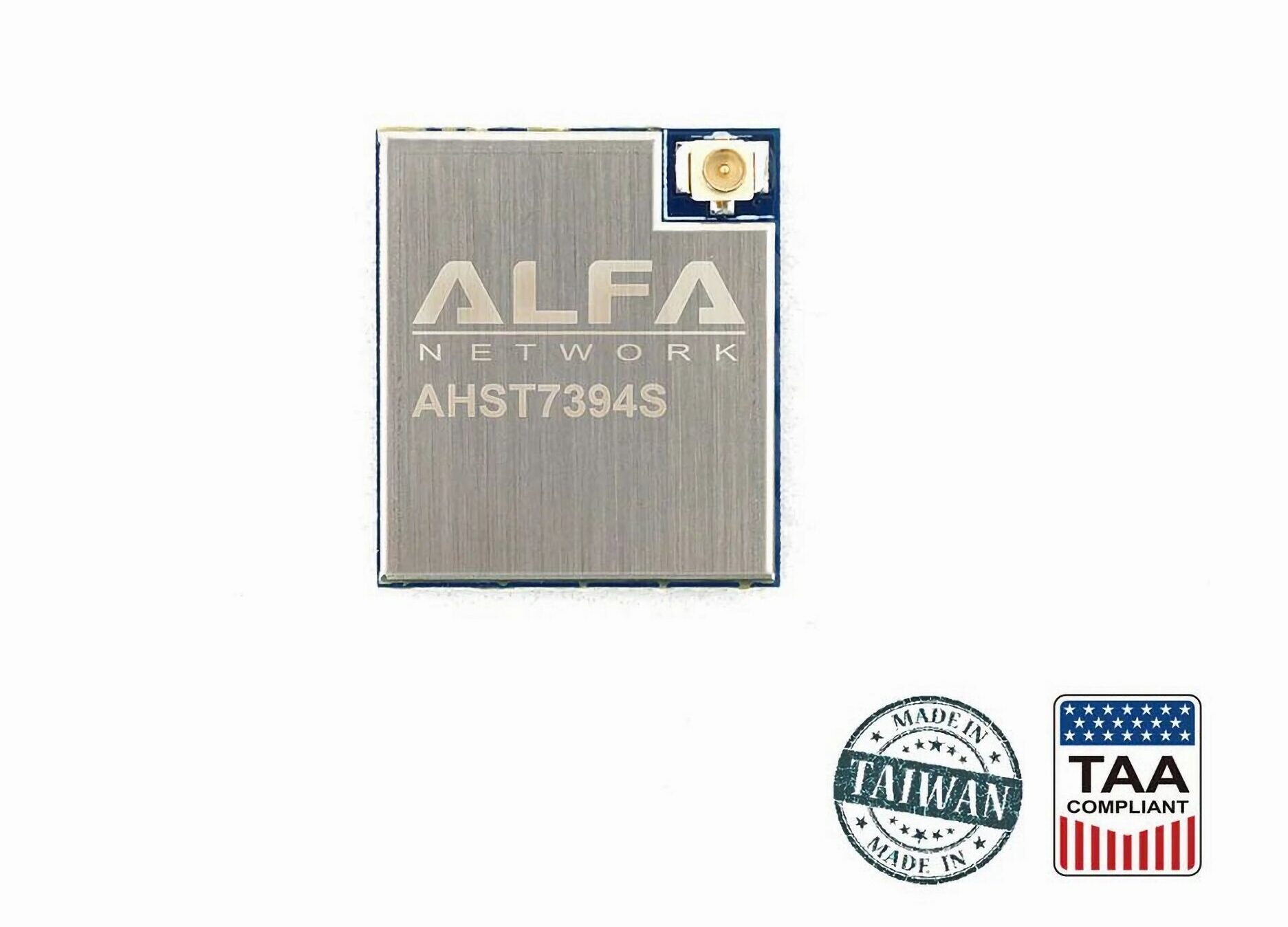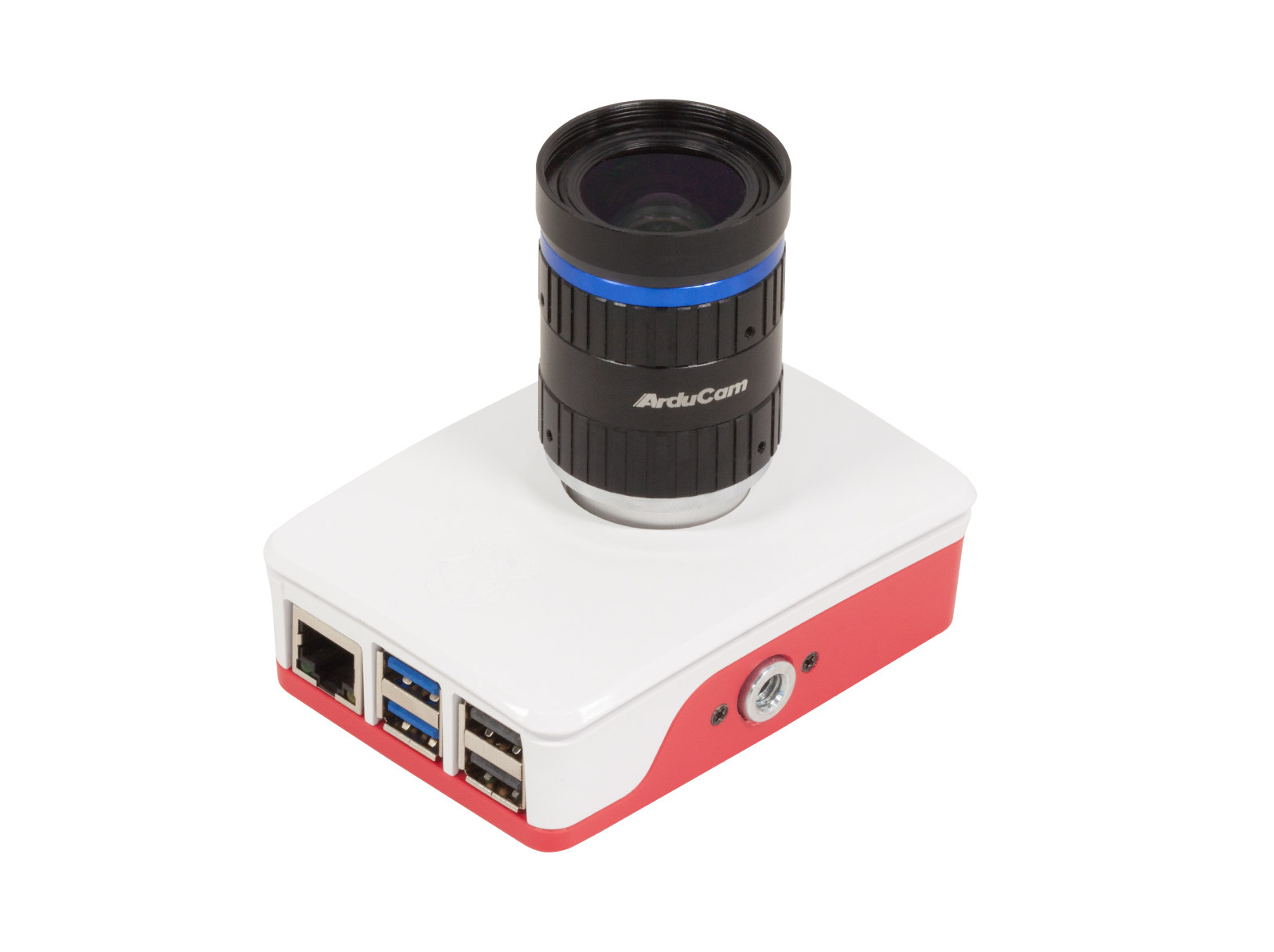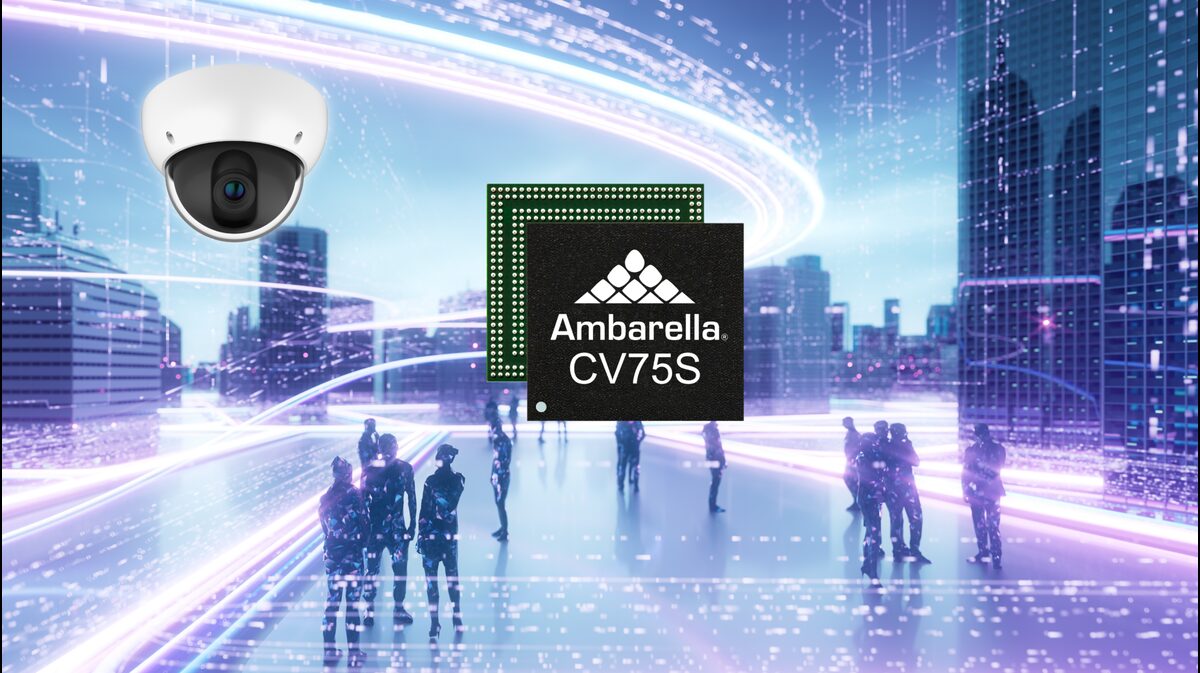The LILYGO T-Camera-Plus-S3 is an ESP32-S3 development board designed for building smart home devices, monitoring systems, and other connected projects. The board features a 1.3-inch TFT LCD and the option to choose from OV2640 or OV5640 camera modules. The T-Camera-Plus-S3 can be considered an upgrade from the T-Camera S3, which was introduced in 2022. The upgraded features include a 1.3″ SPI TFT LCD (240×240), a microphone with MAX98357A codec and external speaker support, support for a micro SD card, a battery connector, and many other features. Previously we have written many different types of ESP32-S3-based boards like the Waveshare ESP32-S3-Matrix, ESP32-S3-Tiny board, and Unexpected Maker NANOS3 feel free to check those out if you are looking for unique ESP32 boards. LILYGO T-Camera-Plus-S3 specification ESP32-S3-WROOM-1 wireless module SoC – ESP32-S3R8 dual-core Tensilica LX7 microcontroller @ 240 MHz (Note: this SKU is not listed in the official ESP32-S3 datasheet) with 2.4 GHz 802.11n […]
Ochin V2 tiny Raspberry Pi CM4 robotics carrier board gets micro HDMI port, Fast Ethernet support
Ochin V2 is an update to the tiny Ochin Raspberry Pi CM4 carrier board for robotics applications and drones that adds a micro HDMI port, support for Fast Ethernet through pads or a GHS connector (no RJ45 connector), two user LEDs, and a few other changes. The form factor remains the same at just 55 x 40 x 4.7mm, or about the size of a Raspberry Pi Compute Module 4, which in combination with a range of USB, UART, I2C, and SPI interfaces, makes it an ideal candidate for space-constrained applications such as robotics system or UAVs. Ochin V2 specifications (differences against Ochin v1 shown in bold or strikethrough): Supported modules – Raspberry Pi CM4 with Broadcom BCM2711 quad-core Cortex-A72 processor, up to 8GB RAM, up to 32GB eMMC flash (the CM4 Lite is not supported since there’s no microSD card on the board), 4Kp60 H.265 decode, 1080p30 H.264 encode, […]
Waveshare Thermal Imaging Camera Module – Raspberry Pi HAT or USB-C model, 80×62 resolution, dual FOV options (45°/90°)
The Waveshare Thermal Imaging Camera module comes in two variants, namely the Thermal-45/90 Camera Raspberry Pi HAT and Thermal-45/90 USB Camera. The main difference between the two is that the HAT is designed to be attached to a Raspberry Pi, Pi Zero, or any other SBC that features a Pi-compatible pin layout like the Sipeed Longan Pi3H, Banana Pi BPI-M4, Radxa Zero 3W SBC, and others. On the other hand, the USB module can be connected to any PC, Android, or other device with a USB connection. The camera features a shutterless design, which is why it can produce a thermal imaging video stream output of up to 25 frames per second (FPS). Additionally, Waveshare offers options for different fields of view (FOV) – a basic version with a 45° FOV and a wide-angle version with a 90° FOV, making it suitable for applications like IR thermometers, industrial temperature control, […]
Sipeed MaixCAM is a RISC-V AI camera devkit with up to 5MP camera, 2.3-inch color touchscreen display, GPIOs
Sipeed MaixCAM is an AI camera based on SOPHGO SG2002 RISC-V (and Arm, and 8051) SoC with a 1 TOPS NPU that takes up to 5MP camera modules and comes with a 2.3-inch color touchscreen display. The development kit also comes with WiFi 6 and BLE 5.4 connectivity, optional Ethernet, audio input and output ports, a USB Type-C port, and two 14-pin GPIO headers for expansion that makes it suitable for a range of computer vision, Smart audio, and AIoT applications. Sipeed MaixCAM specifications: SoC – SOPHGO SG2002 CPU 1 GHz RISC-V C906 processor or Arm Cortex-A53 core (selectable at boot) running Linux 700 MHz RISC-V C906 core running an RTOS 25 to 300 MHz low-power 8051 processor NPU – 1 TOPS @ INT8 with support for models such as Mobilenetv2, YOLOv5, YOLOv8, etc… Video Codec – H.264, H.265, MJPEG hardware encoding and decoding up to 2K @ 30fps Memory […]
Waveshare UGV Rover – A 6-wheel AI robot built around Raspberry Pi 4/5 and ESP32
The Waveshare UGV Rover is a 6-wheel robot platform based on Raspberry Pi 4 or 5 as well as an ESP32 module and built for remote exploration, object recognition, and autonomous navigation. Since the source code for the platform will be open-sourced it can also be used for educational purposes, programming, robotics, AI experimentation, and many other applications. This Unmanned Ground Vehicle (UGV) rover features a 2mm thick aluminum body, six 80mm shock-absorbing tires, and a four-wheel drive system controlled by an ESP32 sub-controller. The sub-controller also handles sensors, LiDAR, cameras, and more. The brain or the main controller of the rover is a Raspberry Pi SBC – either a Pi 4B or Pi 5 – which notably handles computer vision and machine learning operations. Since the mounting holes are designed to fit a Raspberry Pi, it is safe to assume that it will fit other SBCs with the same […]
Alfa Networks AHST7394S Wi-Fi HaLow module enables low-power, long-range IoT connectivity up to 1km
Taiwanese wireless equipment manufacturer, Alfa Networks, and US-based Wi-Fi HaLow semiconductor company, Newracom, have collaborated to develop the AHST7394S Wi-Fi HaLow module. The solder-down module is based on Newracom’s NRC7394 SoC, a low-cost and high-efficiency HaLow SoC chipset providing up to 17dbm output power and capable of connecting to a maximum of 8K devices within a single network. The NRC7394 also supports a standalone mode, which enables the execution of a wide range of IoT applications on the embedded ARM Cortex-M3 CPU. While HaLow is more energy-efficient than other Wi-Fi types, low-power operation modes such as legacy, TWT, and WMM-PS can reduce power consumption further. The AHST7394S Wi-Fi HaLow module supports a data rate of up to 15Mbps, over 600 times faster than LoRaWAN while maintaining a good range (over 1km). The second-generation HaLow module is perfect for building long-range, ultra-low-power networks in sub-1 GHz, license-exempt frequency bands. It is a […]
Pivistation 5 – A Raspberry Pi 5 Camera Kit to quickly get started with computer vision (Crowdfunding)
Arducam Pivistation 5 is an all-in-one Raspberry Pi 5 camera kit that aims to provide a turnkey hardware and software solution to quickly get started with computer vision applications and offered with a choice of camera sensors designed for various applications. The system looks like a Raspberry Pi 5 SBC housed in the official case fitted with a camera. Three models are available, namely the “Hawkeye” featuring a high-resolution 64MP autofocus camera, the “Darksee” with an 8MP camera sensor with ultra low-light sensitivity, and the “Klarity” with a 20MP camera with fixed focus and a large 1-inch sensor. Pivistation 5 specifications All the cameras above rely on a rolling shutter, but the company is also working on the upcoming Arducam Pivistation 5 Swift model that includes a global shutter for robotics applications. Besides the pre-assembled hardware, the Arducam Pivistation 5 family aims to quicken the development process with pre-installed software […]
Ambarella CV75S AI SoC brings Vision Language Models (VLM) and Vision Transformer Networks to cameras
Ambarella has been expanding its AI SoC portfolio, and the latest addition is the CV75S family of 5nm chips. The company claims this family introduces the most cost- and power-efficient SoC option for running the latest AI-based image processing like vision language models (VLMs) and vision transformer networks in security, robotics, conferencing, and sports cameras. The CV75S family is the first in Ambarella’s lineup to integrate the latest CVflow 3.0 AI engine, which results in 3 times the performance compared to the former generation. CVflow 3.0 is a chip architecture designed based on a deep understanding of the core computer vision algorithms. It features a dedicated vision-processing engine that Ambarella has programmed using a high-level algorithm description and works with Tensorflow, Caffe, and PyTorch. This engine enables the SoC to perform trillions of operations each second at a fraction of the power consumption of leading GPUs and general-purpose CPU solutions. These chips also […]


